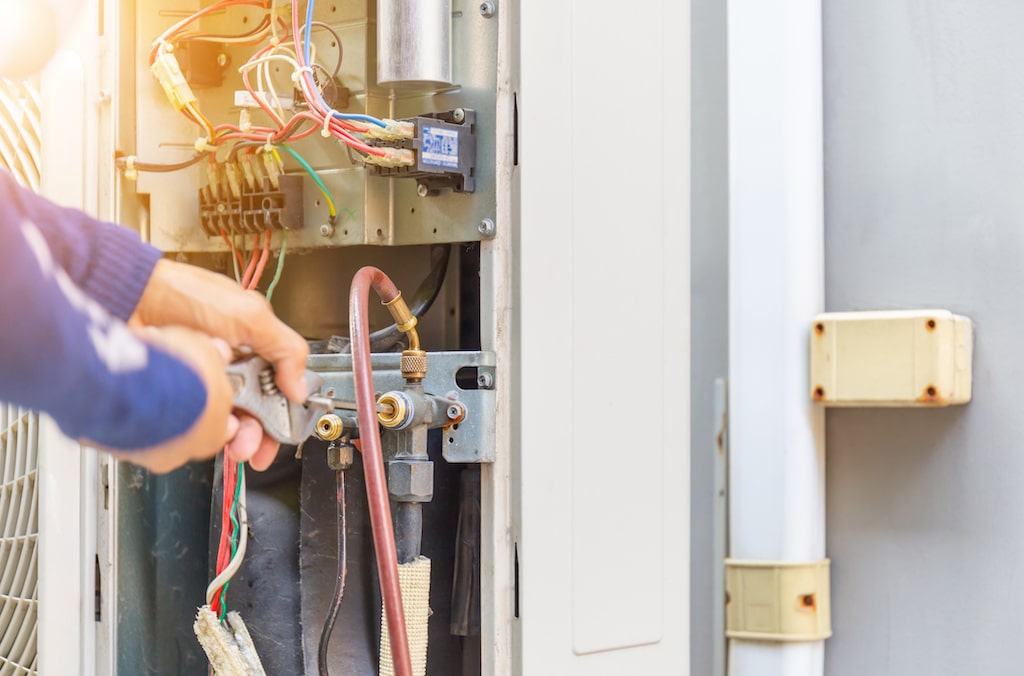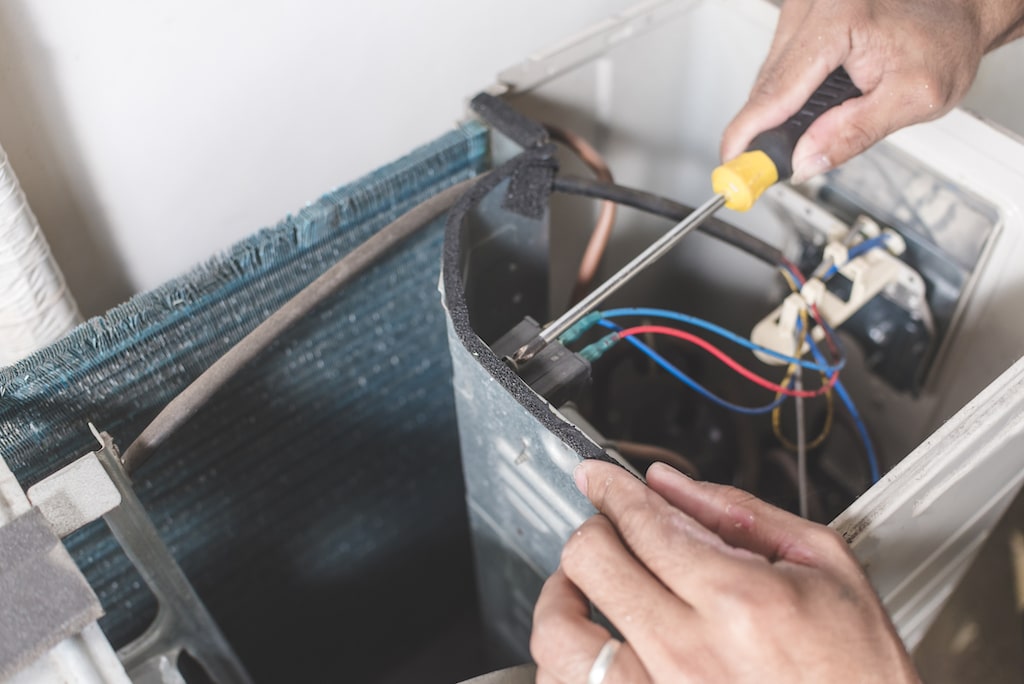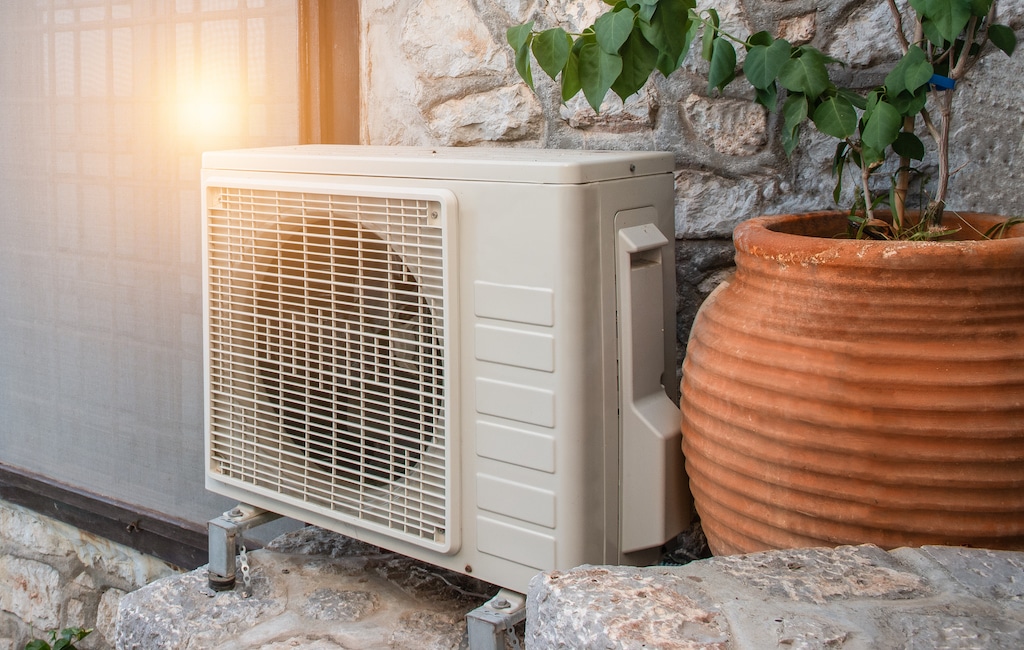Unlocking the Secrets of AC Installation: A Comprehensive Guide for Every Homeowner

Ever wondered, “How can I ensure my AC installation is top-notch?
As a homeowner, the correct installation of your air conditioning unit is pivotal for both your comfort and your wallet.
In this article, we’ll unravel the mysteries of AC installation, offering insights, tips, and expert advice to guarantee you get the best out of your unit.
What is AC Installation?
AC Installation is a term that many might associate simply with the act of placing an air conditioning unit within a space.
However, it encompasses much more than that. The process of AC Installation is a meticulous task that requires expertise, precision, and a deep understanding of both the unit and the environment it’s being placed in.
At its core, AC Installation refers to the process of setting up an air conditioning unit in a home, office, or any other building. But it’s not as straightforward as it sounds. The installation process is a blend of science and art, ensuring that the unit not only fits but also functions at its peak efficiency.
The importance of correct AC Installation cannot be overstated. It’s not just about ensuring that the unit starts and cools the room.
Proper installation determines how efficiently the unit will run, how long it will last, and, most importantly, how much comfort it will provide to the inhabitants of the space.
For instance, an improperly installed unit might consume more energy, leading to higher electricity bills. It might also not cool the room evenly or might be noisy during operation.
In contrast, a correctly installed AC will operate quietly, cool the room uniformly, and consume the optimal amount of energy.
Moreover, AC Installation also involves ensuring that the unit is placed in a location where it can draw in fresh air easily, is not exposed to direct sunlight for prolonged periods, and is easily accessible for maintenance and repairs.
AC Installation is a comprehensive process that goes beyond merely placing a unit in a room.
It’s about ensuring that the air conditioner is set up in a manner that guarantees optimal performance, energy efficiency, and longevity. Proper installation ensures that you get the best out of your investment, providing comfort and coolness for years to come.

Photo By Michael Edwards at iStock
The Importance of Proper AC Installation
Air conditioning has become an essential part of modern living, especially in regions experiencing extreme temperatures.
While many homeowners focus on the brand or model of the air conditioner, the installation process is equally, if not more, crucial. Proper AC installation can determine the efficiency, longevity, and overall performance of the unit.
Let’s delve deeper into why proper AC installation is so vital.
Maximizing Efficiency with Correct Installation
AC Installation is not just about placing a unit in your home; it’s about ensuring that it’s set up to work at its optimal efficiency.
An improperly installed AC can consume more energy, leading to higher electricity bills. For instance, if the unit is too large for the space, it will constantly turn on and off, consuming more power.
On the other hand, a unit too small will run continuously, trying to cool the space, leading to increased wear and tear.
By ensuring proper installation, you can guarantee that your AC runs efficiently, saving you money in the long run.
Longevity and Durability of the Unit
The lifespan of an air conditioner is significantly influenced by its installation.
A correctly installed AC ensures that all components are securely in place, reducing the risk of wear and tear. It also ensures that the unit has adequate ventilation, preventing overheating, which can reduce the lifespan of the unit.
Proper installation can add years to your AC’s life, ensuring you get the most out of your investment.
Ensuring Optimal Performance
For an AC to perform at its best, it needs to be installed in the right location, at the right angle, and with all its components correctly connected.
This ensures that the unit cools the space evenly and maintains the desired temperature. Improper installation can lead to hot and cold spots in the room, reduced airflow, and even water leaks.
By prioritizing proper installation, you can enjoy consistent cooling and a comfortable living environment.
Safety Concerns and Proper AC Installation
Safety should never be compromised, especially when dealing with electrical appliances like air conditioners.
An improperly installed AC can pose various risks, from electrical shorts to fire hazards. Furthermore, incorrect installation can lead to refrigerant leaks, which can be harmful to both the environment and the residents of the house.
By ensuring that your AC is installed by professionals who adhere to safety standards, you can rest easy knowing that your home is safe.
Cost Implications of Improper Installation
While it might be tempting to cut corners and save on installation costs, improper AC Installation can lead to higher expenses in the long run.
From increased energy bills due to reduced efficiency to frequent repairs and replacements due to wear and tear, the costs can quickly add up. Investing in proper installation can save homeowners a significant amount in future expenses.
Decoding the Right Size for Your Space
When it comes to AC Installation, one of the most critical decisions homeowners face is selecting the right size for their space.
The size, often referred to as its tonnage, directly impacts the efficiency, energy consumption, and overall performance of the unit.
Let’s dive deeper into understanding the importance of choosing the correct size and how to determine the best fit for your home.
The Science Behind AC Tonnage and Room Size
The term ‘tonnage’ in AC Installation doesn’t refer to the weight of the unit but rather its cooling capacity.
One ton of air conditioning can cool approximately 12,000 BTUs (British Thermal Units) in an hour. The size of the room and the amount of heat it gains determine the BTUs required to cool it efficiently.
For instance, a larger room with more windows might gain more heat during the day, requiring a higher tonnage AC.
Conversely, a smaller room with fewer windows and less direct sunlight might require less cooling capacity. Understanding this relationship is crucial to ensure that the AC operates efficiently and provides the desired comfort level.
Implications of Over-sizing and Under-sizing
Choosing the wrong size during AC Installation can have several implications:
Over-sizing
If the AC is too large for the space, it will cool the room quickly but might not run long enough to dehumidify the space, leading to a cold but damp environment.
This frequent on-and-off can also lead to increased wear and tear on the unit.
Under-sizing
An AC that’s too small for the space will have to work continuously to try and cool the room, leading to higher energy consumption and reduced lifespan of the unit. The room might also never reach the desired temperature, leading to discomfort.
Factors Influencing the Right Size Selection
While the square footage of the room is a primary factor in determining the AC size, other elements play a role:
Ceiling height
Rooms with higher ceilings might require more cooling as they have a larger volume of air.
Number and size of windows
More windows or larger windows can let in more heat, especially if they face the sun.
Insulation
Well-insulated homes might retain cool air better, reducing the cooling requirement.
Occupancy
Rooms that frequently have more people might need more cooling due to body heat.
A Quick Guide to AC Sizing
For a more straightforward approach to AC Installation sizing, here’s a breakdown based on room size:
- Up to 400 square feet: Opt for a 2-ton unit. Ideal for larger living spaces or open-plan areas.
- Up to 250 square feet: A 1.5-ton unit should suffice. Suitable for medium-sized bedrooms or home offices.
- Up to 150 square feet: A 1-ton unit is recommended. Perfect for smaller bedrooms or study rooms.
- Up to 200 square feet: Go for a 0.8-ton unit. Best for small rooms or spaces that don’t receive much direct sunlight.
Consulting with Professionals
While these guidelines provide a starting point, consulting with an AC Installation professional can offer a more tailored recommendation.
They can assess the unique characteristics of your home and provide insights into the best size for your space.
The size of the AC unit plays a pivotal role in its performance and efficiency.
By understanding the relationship between room size and AC tonnage, homeowners can make informed decisions, ensuring comfort and cost savings.
Also read: Air Conditioner Installation: Your Ultimate Guide For Cool Summers

Photo By NAPA74 at iStock
Location, Location, Location
The success of an AC Installation doesn’t just hinge on the unit’s quality or size; its placement within your home is equally crucial.
The location of your AC can significantly impact its efficiency, longevity, and overall performance. Let’s delve into the intricacies of AC placement and why it’s so vital.
The Perils of Direct Sunlight on AC Units
When an AC unit, especially the indoor component, is exposed to direct sunlight, it can face several challenges.
The sunlight heats the unit, making it work harder to cool the room, leading to increased energy consumption. Over time, this constant exposure can also cause wear and tear on the unit, reducing its lifespan.
Moreover, the UV rays from the sun can damage the exterior of the unit, leading to discoloration and potential degradation of some components.
For an efficient AC Installation, it’s imperative to choose a location that avoids direct sunlight, ensuring the unit remains cool and functions optimally.
Heat Sources and Their Impact on AC Performance
Placing your AC near other heat sources, such as ovens, stoves, or heaters, can severely hamper its performance.
These heat sources can raise the temperature around the AC, forcing it to work harder to achieve the desired cooling. This not only increases energy consumption but can also strain the unit, leading to potential malfunctions or reduced longevity.
For a successful AC Installation, always ensure that the unit is positioned away from any appliances or areas that generate significant heat.
The Importance of Unobstructed Airflow
Airflow is the lifeblood of an air conditioner.
For the unit to function efficiently, it needs a constant flow of air without any obstructions. Placing the AC near potential obstructions, such as furniture, curtains, or other appliances, can hinder this airflow.
An obstructed AC can lead to uneven cooling, with certain parts of the room feeling warmer than others. It can also strain the unit as it tries to pull in enough air, leading to increased energy consumption and potential wear and tear.
During AC Installation, always ensure there’s a minimum of 1 meter of clear space around the unit to guarantee unobstructed airflow.
Strategic Placement for Optimal Cooling
While avoiding sunlight and heat sources is crucial, other factors can influence the optimal placement of an AC unit.
For instance, placing the unit higher up can lead to more even cooling as cold air tends to sink.
Additionally, considering the room’s layout and where people most frequently sit can help ensure everyone feels comfortable.
Consulting Experts for Ideal Placement
While homeowners can make educated guesses about AC placement, consulting with AC Installation professionals can provide more tailored advice.
These experts can assess a home’s unique layout, considering factors like sunlight, heat sources, and room usage, to recommend the ideal location for the unit.
The location of an AC unit plays a pivotal role in its efficiency and effectiveness. By considering factors like sunlight, heat sources, and airflow, homeowners can ensure their AC Installation provides optimal cooling and longevity.
Ventilation: The Unsung Hero
While many homeowners focus on the brand, size, and location of their air conditioner during AC Installation, ventilation often gets overlooked. However, proper ventilation is paramount for the optimal functioning and longevity of the unit.
Let’s explore why ventilation is the unsung hero of AC performance.
The Role of Ventilation in Cooling Efficiency
Ventilation plays a pivotal role in the cooling efficiency of an air conditioner.
When an AC unit has adequate ventilation, it can easily draw in air, cool it, and distribute it throughout the room. This process is hindered if the unit is cramped or has obstructions around it.
For an AC Installation to provide the best cooling efficiency, there should be a minimum of 15 centimeters of open space around the top and sides of the unit. This space ensures that the AC can pull in enough air, leading to faster and more efficient cooling.
Preventing Overheating and Prolonging Lifespan
An AC unit generates heat, especially the outdoor component.
Without proper ventilation, this heat can get trapped around the unit, causing it to overheat. Overheating can lead to a range of issues, from reduced efficiency to potential damage to the unit’s components.
By ensuring proper ventilation during AC Installation, homeowners can prevent these issues, ensuring that the unit runs smoothly and has a longer lifespan.
Reducing Energy Consumption and Costs
A well-ventilated AC doesn’t have to work as hard to cool a room. When the unit can easily draw in and expel air, it uses less energy.
On the other hand, a poorly ventilated AC might need to run longer or at a higher capacity to achieve the same cooling level, leading to increased energy consumption.
By prioritizing ventilation during AC Installation, homeowners can reduce their energy bills, leading to significant savings over time.
Ensuring Healthy Air Quality
Ventilation isn’t just about cooling efficiency; it also plays a role in maintaining healthy indoor air quality.
A well-ventilated AC can effectively filter out pollutants, allergens, and other harmful particles from the air. Conversely, a unit with poor ventilation might recirculate these contaminants, leading to potential health issues for the home’s residents.
The Importance of Regular Maintenance and Ventilation Checks
While ensuring proper ventilation during AC Installation is crucial, homeowners should also prioritize regular maintenance and checks.
Over time, obstructions like debris, dust, or other objects can hinder ventilation. Regular checks and cleaning can ensure that the AC continues to have optimal airflow, maintaining its efficiency and performance.
While aspects like brand, size, and location are crucial during AC Installation, ventilation is equally vital.
By ensuring proper airflow around the unit, homeowners can enjoy efficient cooling, reduced energy costs, and a longer lifespan for their air conditioner.
Safety Protocols During Installation
When it comes to AC Installation, while efficiency and performance are paramount, safety should never be compromised.
The installation process involves various components, electrical connections, and positioning that, if not handled correctly, can pose risks to both the homeowners and the unit itself.
Let’s delve deeper into the essential safety protocols that should be adhered to during AC installation.
Avoiding Hazardous Areas
One of the primary safety concerns during AC Installation is ensuring the unit isn’t placed near potential gas leak areas.
Gas leaks, apart from being hazardous on their own, can become even more dangerous when in proximity to electrical appliances like air conditioners.
The risk of ignition or even explosions becomes a real threat.
Similarly, areas where sulfur or oil mist might be present should be avoided. These substances can not only damage the AC components but also pose fire risks when they come into contact with electrical parts.
Handling Components with Care
The components of an air conditioner are designed to be robust, but they still require careful handling.
Mishandling can lead to damages, which might affect the unit’s performance or even render it unsafe for use.
For instance, the compressor and the condenser coils are critical components of the AC system. Damaging them during AC Installation can lead to refrigerant leaks or inefficient cooling.
Always ensure that these parts are handled with care, lifted correctly, and placed gently.
Ensuring Secure Attachments
An air conditioner, especially the outdoor unit, can be heavy.
When installing, especially at height or on wall brackets, it’s crucial to ensure that all attachments are secure. A poorly secured AC can pose risks of falling, leading to potential injuries and damage to the unit.
Using the right type of screws, bolts, and brackets, and ensuring they are tightened correctly, is essential.
It’s also advisable to double-check all attachments after the AC Installation is complete to ensure everything is firmly in place.
Electrical Safety Protocols
Dealing with the electrical components of an AC requires utmost caution.
Ensure that the power source is turned off before starting the installation. Using insulated tools, wearing protective gloves, and ensuring that all wires are correctly connected can prevent potential electrical shocks or shorts.
It’s also essential to ensure that the AC unit is grounded correctly.
Proper grounding can prevent potential electrical surges that might damage the unit or pose safety risks.
Regular Safety Checks Post-Installation
While ensuring safety during air conditioner Installation is crucial, it’s equally important to conduct regular safety checks post-installation. These checks can identify potential issues like loose attachments, electrical problems, or other hazards before they become significant problems.
Homeowners should consider scheduling regular maintenance checks with professionals.
These experts can assess the unit, ensure all safety protocols are still in place, and recommend any necessary adjustments.
Also read: Issues To Be Handled By A Professional Ac Repair Company
Top Tips for a Smooth AC Installation
When it comes to air conditioner Installation, the process might seem straightforward, but several factors can influence the efficiency and longevity of your air conditioning unit. The right installation can indeed make or break your AC’s performance.
To ensure that your AC serves you efficiently for years to come, here are some top tips to guarantee a smooth installation:
Hire Professionals
While DIY projects can be tempting to save costs, AC Installation is a task best left to professionals. They have the expertise, tools, and knowledge to ensure that the unit is installed correctly and safely.
Choose the Right Location
The placement of your AC unit plays a pivotal role in its performance. Ensure it’s away from direct sunlight, heat sources, and has ample space around for ventilation. The location should also be easily accessible for maintenance and repairs.
Ensure Proper Ventilation
As mentioned earlier, ventilation is crucial. Ensure there’s enough space around the unit, especially if it’s an outdoor component, to prevent overheating and ensure efficient performance.
Size Matters
Before the AC Installation, ensure you’ve chosen the right size or tonnage for your space. An oversized or undersized unit can lead to inefficiencies and increased energy bills.
Check Electrical Connections
Ensure that the electrical connections are secure and that the unit is grounded to prevent electrical surges or potential hazards.
Invest in Quality Equipment
While it might be tempting to save money on cheaper units, investing in a quality AC can save you more in the long run through reduced maintenance costs and increased efficiency.
Regular Maintenance
Once the AC Installation is complete, schedule regular maintenance checks. This proactive approach can identify potential issues before they escalate, ensuring your unit runs smoothly.
Understand Your Unit
Take the time to understand your AC’s features and operational guidelines. This knowledge can help you use the unit more efficiently and identify any irregularities in its performance.
Insulation is Key
Ensure that the room or space where the AC is installed is well-insulated. Proper insulation can enhance the efficiency of the AC, ensuring faster cooling and reduced energy consumption.
Safety First
From ensuring the unit isn’t near potential gas leak areas to handling all components with care, always prioritize safety during and after the AC Installation.
Clear the Area
Before the professionals arrive for the AC Installation, clear the area of any obstructions or furniture. This not only speeds up the installation process but also ensures safety.
Ask Questions
Don’t hesitate to ask the professionals any questions you might have about the installation process, maintenance, or the operation of the unit. Being informed can help you get the most out of your AC.

Photo By Paolo Cordoni at iStock
Common Mistakes to Avoid During AC Installation
Embarking on an AC Installation journey can be both exciting and daunting.
While a new air conditioner promises comfort and respite from the heat, the installation process is riddled with potential pitfalls.
Many homeowners, in their eagerness or lack of information, end up making common mistakes that can affect the efficiency, safety, and longevity of their AC units.
Let’s delve into these common errors and understand how to avoid them:
Installing in the Hottest Parts of the House
It might seem logical to place the AC unit in the warmest part of your home.
However, doing so can overwork the unit, as it will continuously struggle to cool down a perpetually hot area. Instead, choose a location that’s more central or shaded to ensure even cooling and efficient operation.
Hiding the AC Unit
While aesthetics are essential, hiding your AC unit behind curtains, furniture, or in enclosed spaces can hinder its performance. The unit needs proper ventilation to function optimally.
Concealing it can restrict airflow, leading to inefficiencies and potential overheating.
Placing Near Fire Hazards
Safety should be paramount during AC Installation. Placing the unit near potential fire hazards like stoves, heaters, or even fireplaces can be dangerous.
Not only can it affect the unit’s performance, but it also poses significant safety risks.
Positioning Near Trash Cans
While this might seem harmless, placing your AC near trash cans can lead to unpleasant odors being circulated throughout your home.
The AC unit draws in air from its surroundings, and if it’s near a trash can, it might pull in unwanted smells.
Ignoring Regular Maintenance
Once the AC Installation is complete, it’s a mistake to forget about the unit until something goes wrong.
Regular maintenance checks can identify potential issues before they escalate, ensuring smooth operation.
Incorrect Sizing
One of the most common mistakes is installing an AC that’s either too big or too small for the space. This can lead to inefficiencies, increased energy bills, and uneven cooling.
Overlooking Insulation
Proper insulation enhances the efficiency of the AC. Ignoring gaps in windows, doors, or walls can lead to cool air escaping, making the AC work harder.
Not Consulting Professionals
While DIY is popular, air conditioner Installation is best left to professionals. They can provide insights, ensure safe installation, and even offer tips for optimal usage.
Forgetting About the Outdoor Unit
If your AC has an outdoor component, it’s essential to ensure it’s placed on a stable surface, away from direct sunlight, and has proper ventilation.
Ignoring the User Manual
The user manual provides valuable information about the AC’s features, maintenance, and safety guidelines. Overlooking this resource can lead to unnecessary mistakes.
While AC Installation promises comfort, it’s essential to be aware of potential mistakes that can hinder this comfort.
By being informed and cautious, homeowners can ensure that their AC provides efficient cooling, lasts longer, and operates safely.
Also read: Benefits Of Hiring A Professional Ac Repair Company
Post-Installation Care
After successfully completing the AC Installation, many homeowners might believe that their job is done.
The unit is in place, the cool air is flowing, and comfort has been restored. However, the reality is that the journey has just begun. The post-installation phase is equally, if not more, critical to ensure that the air conditioner continues to operate efficiently and lasts for its intended lifespan.
The importance of post-installation care cannot be overstated. Just like any other sophisticated appliance, an air conditioner is made up of various components that work in harmony to provide cooling.
Over time, due to regular usage, external factors, and natural wear and tear, these components can face challenges.
Dust can accumulate, filters can get clogged, and electrical connections can become loose.
If left unchecked, these minor issues can escalate, leading to reduced efficiency, higher energy bills, or even potential breakdowns.
Regular maintenance is the cornerstone of post-installation care. It involves having professionals inspect the unit, clean essential components, check for potential issues, and rectify them before they become significant problems.
This proactive approach not only ensures that the AC runs smoothly but also can identify and address potential energy inefficiencies.
For instance, a clogged filter can make the AC work harder, consuming more energy. Regular cleaning can prevent this, leading to optimal performance and reduced energy bills.
Cleaning is another crucial aspect of post-installation care. The external and internal components of the AC unit are exposed to the environment. Dust, pollen, and other pollutants can accumulate over time.
Regular cleaning ensures that the air circulated by the AC is clean and healthy. Especially for homeowners with allergies or respiratory issues, this can be a significant benefit.
Top 5 Tips to Follow To Take Care of Your AC Systems
Air conditioning systems are a crucial part of our homes, especially during the sweltering summer months.
Ensuring they run efficiently and safely is paramount. Here are the top five tips to ensure the longevity and optimal performance of your AC system:
Hire a Professional
The installation of an AC system is not a DIY job. It’s always recommended to hire a professional for this task.
Experts bring with them a wealth of knowledge, experience, and the right tools. They not only ensure that the installation is done correctly but also provide guidance on maintenance and potential issues to watch out for.
Consider the Location
The placement of your AC unit plays a significant role in its efficiency. It’s advisable to avoid installing it in the hotter parts of your house, like direct sunlight.
Additionally, ensure that the unit is not concealed behind furniture or curtains, as this could obstruct airflow and hinder ventilation, leading to reduced efficiency.
Avoid Fire Hazards
Safety should always be at the forefront of any installation. Ensure that your AC unit is positioned away from any potential fire hazards such as flammable materials or electrical mishaps.
Regular checks and maintenance can also help in preventing any unforeseen accidents.
Don’t Install Near Trash
While this might seem like common sense, it’s essential to mention. Installing your AC system near a trash can or waste disposal area can lead to unpleasant odors being circulated throughout your home.
This not only affects the air quality but can also be a health concern.
Dedicated Circuit
AC units are power-intensive appliances. It’s crucial to ensure that they are connected to a dedicated circuit. This prevents overloading, potential electrical fires, and ensures that the unit functions at its optimal capacity.
In conclusion, taking care of your AC system is not just about ensuring cool air. It’s about safety, efficiency, and longevity.
Follow these tips, and you’ll be on your way to a cooler, safer home.
One Hour Air Conditioning & Heating: Your Go-to AC Installation Experts in Fort Worth, Tx
In Fort Worth, TX, and its neighboring areas, One Hour Air Conditioning & Heating stands out as the leading choice for AC installation.
This esteemed company has built a reputation based on outstanding reviews and unparalleled service quality.
Residents trust them not just for their expertise but also for their commitment to ensuring complete customer satisfaction.
If you’re seeking reliable AC installation in the Fort Worth region, look no further than One Hour Air Conditioning & Heating. Their track record speaks volumes about their dedication and proficiency in the field. Choose them for a hassle-free and top-tier service experience.

Photo By fatido at iStock
FAQS
- How often should I replace my air conditioner?
Typically, an air conditioner lasts between 10 to 15 years. However, with regular maintenance and proper care, some units can last even longer. It’s advisable to consult with a professional if your AC is over a decade old to assess its efficiency and performance.
- What size AC unit do I need for my home?
The size or tonnage of an AC unit depends on various factors, including the size of your space, insulation, number of windows, and regional climate. A professional can conduct a load calculation to determine the appropriate size for your home.
- Can I install the AC unit myself?
While some homeowners might be tempted to undertake a DIY installation, it’s recommended to hire professionals. They have the expertise, tools, and knowledge to ensure a safe and efficient installation.
- How often should I service my AC unit post-installation?
Regular maintenance is crucial for optimal performance. It’s advisable to have your AC serviced at least once a year, preferably before the peak cooling season.
- Why is my newly installed AC making noise?
Some noise during startup is normal. However, persistent noises like rattling or buzzing could indicate loose components or other issues. It’s best to consult with the installation professional or technician.
- How can I make my AC unit more energy-efficient post-installation?
Regular maintenance, using energy-efficient settings, ensuring proper insulation, and using ceiling fans to circulate air can enhance your AC’s energy efficiency.
- What’s the difference between a split AC and a central AC system?
A split AC has separate indoor and outdoor units, ideal for cooling individual rooms. In contrast, a central AC system uses ducts to distribute cooled air throughout the entire home.
- How do I know if my AC is installed correctly?
A correctly installed AC will cool the room uniformly, operate quietly, and not show any error signs. If you’re unsure, it’s best to get a post-installation check from a professional.
- Can I use my old ductwork for a new AC installation?
It depends on the condition of the ductwork. If it’s in good shape, it might be compatible with a new system. However, old or damaged ductwork can reduce efficiency and should be replaced.
- How long does the AC installation process take?
The duration varies based on the type of AC, the complexity of the installation, and any additional requirements. Typically, a split AC can be installed in a few hours, while a central system might take a day or two.
See our previous blog post here.
Check out this tip!
Photo By justocker at iStock
Dustin Hufsey


